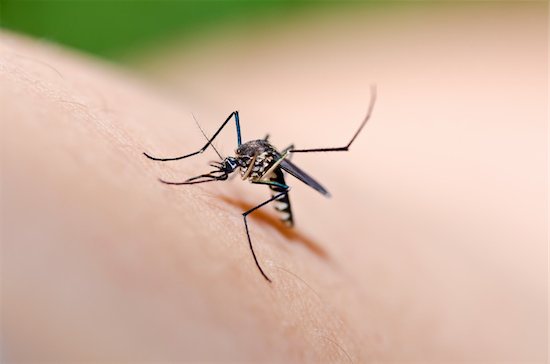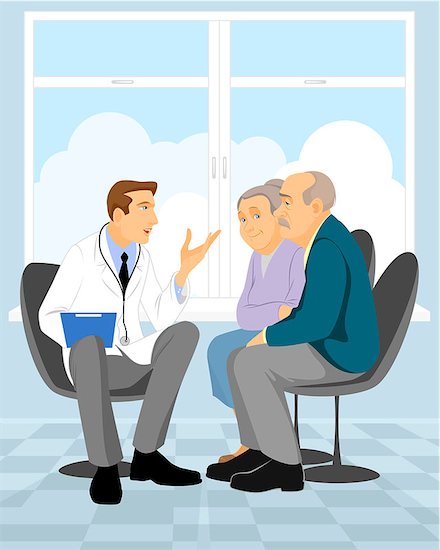Posts tagged early detection

What Is the Zika Virus?
The Zika virus is a disease that has recently reemerged over the past few years. Doctors discovered the disease in the Zika Forest of Uganda, during the 40’s. Over the past decade, the virus has made its way across the Pacific Ocean and to the Americas, causing an unprecedented epidemic. Find out why so many people are worried about the Zika virus, and what you should know about this troubling disease.
What Makes the Zika Virus So Dangerous?
The Zika virus is related to the dengue, yellow fever, Japanese encephalitis, and the West Nile viruses. Like many of these viruses, Zika is most commonly transmitted through mosquitoes. However, what makes the disease truly troubling is that it can also spread from mother to child, through sex, and through blood transfusions, making it a sexually transmitted disease.
People who contract the Zika virus don’t usually display any signs or symptoms of the disease. When people do show signs of the virus, the most common symptoms are fever, rash, headache, joint pain, red eyes, and muscle pain. These are mild symptoms, lasting for only a few days or a week. What makes Zika such dangerous condition is how it affects women who are pregnant. The virus can cause severe birth defects, as well as miscarriages and stillbirths.
A recent study at the published in the EMBO Journal looked into why the virus seems to affect people more during pregnancy than after. Researchers found is that low levels of an antiviral factor called interferon-induced transmembrane protein 3 (IFITM3) leave the body susceptible to the virus. IFITM3 prevents the multiplication of the virus and the cells from dying.
Preventing the Virus From Affecting You
The researchers of the Zika study hope to develop drugs in the future to prevent the destruction of cells and the virus. For now, the CDC recommends several ways to avoid contracting the virus.
- Keep Bugs Away – The first method is to keep mosquitoes away from you. Mosquitoes are the primary cause of the virus. It is advised that people wear long-sleeved shirts and pants and used EPA-registered insect repellents.
- Prep Your Home – Mosquitoes can easily invade your home. That’s why the CDC suggest keeping the air conditioner on and closing your windows and screen doors. You should also use mosquito netting to cover bedding for you and your children.
- Use Protection During Sex – Like most sexually transmitted disease, condoms and abstinence will protect you or your partners from contracting the disease.
- Avoid Traveling to Zika Areas – The CDC stresses that pregnant women should avoid traveling to areas at risk for Zika. They are more vulnerable to the dangerous effects of the virus.
Unfortunately, there is no cure for the Zika Virus. Taking these precautions will help keep you safe. The CDC is still researching a way to reduce the spread of this disease and eventually cure it. It is also important to get tested for the virus. By knowing if you are infected with the virus, you can plan for the future.

Age Affects HIV Treatments in Individuals
HIV affects many people in the United States, and finding the right HIV treatments is difficult. A new article, published in the Journal of the American Geriatrics Society, suggests that age affects treatment for elderly patients. New age-specific strategies need to be developed to combat the virus.
Age and HIV
Unfortunately, a certain percentage of young people in America have contracted HIV. According to the CDC, in 2012, around 44% of young people around the age of 18 to 24 years old were living with HIV they did not know they had. Even more frightening is the fact that by 2014, young people around the age of 13 to 24 years old made up more than 1 in 5 new HIV diagnosis.
Meanwhile, the elderly are at risk too. Older adults aged 55 and older, account for at least 26% of the estimated 1.2 million people living with HIV. This group, in particular, is at a greater risk. They have the same risk factors as younger people, but they are less aware of what can cause HIV.
Developing Age-Specific HIV Treatments
Since many older adults are less aware of HIV risk factors, they have an increased risk for late or missed diagnosis. Even worse, they are more susceptible to disease, meaning drugs carry more side effects for them. Researchers began investigating based on the need for elderly patients to receive proper HIV treatments.
“Our article highlights the need for more research on screening, evaluation, and treatment in older adults infected with HIV. As the number of older people living with HIV grows, we need scientifically sound data to help prepare our clinicians and healthcare systems for the unique needs and expectations of this group,” said Dr. Aroonsiri Sangarlangkarn, co-author of the Journal of the American Geriatrics Society article.
Hopefully, physicians will see this research as a means to find better HIV treatments for older adults. Using the right tools can help with diagnosing these patients and helping them live with the disease.
HIV Requires Early Treatment
HIV Requires Early Treatment: B Cells Are the Key in Infected Subjects
It was very clear early on in HIV research that the earlier treatment for the disease begins, the better a person will respond to the antiretroviral medications. However, the exact reason for this has eluded researchers. A recent study of the blood of nearly 100 treated and untreated HIV-infected volunteers has provided a possible explanation as to why HIV requires early treatment. The study underscored the need to begin treatment as close to viral exposure as possible, as it not only means saved lives but it also can ensure a healthier and better quality of life for those living with HIV.
B cells are immune system cells that produce antibodies to viruses like HIV. However, in the above mentioned study, some previously unknown characteristics of B cells were discovered. The researchers found that the antibodies the B cells produced in infected but untreated people were abnormal. These B cells were more activated, more unstable and unresponsive to further stimulation as compared to normal B cells. This may explain why HIV antibodies naturally produced in the body are unable to clear the infection.
The research further discovered that those who were HIV infected—but had undergone early antiretroviral treatment—had B cell responses that were dramatically different from those who had not received treatment. In the treated patients their antibodies were normal, although there were less of them than in the untreated volunteers. The treated patient’s antibodies were also stronger and more effective on the HIV cells. This resulted in a lower amount of virus in the blood, known as a viral load. It also meant a low level of immune activation, which results in a stronger and healthier immune system. All of this underscores the fact that HIV requires early treatment. Antiretroviral medication, when prescribed during the early stages of the infection can stabilize the mutation of any cells – T cells or B cells. This means that the infected person’s natural immune defenses will be robust and better able to defend against HIV for the long run.
Importance of Early HIV Infection Detection
The war on HIV rages on. While medical advancements in treatment and therapy have shown progress, there are still areas that need attention. Recent studies still show that a high percentage of Europeans infected with HIV are receiving or entering into treatment at later stages. Countries throughout the continent are still showing late detection for those with HIV. Worrisome findings reveal that many who were finally tested for the virus developed AIDS within only a few months after diagnosis. This emphasizes the need for earlier detection.
Overall, the numbers show a decrease in late detection for Europe. The increase seems to be in certain target groups and in certain regions. For example, the number of drug users (injection drugs) who presented with late detection of HIV has steadily increased. Certain countries are particularly vulnerable to this rise in numbers at present. The threat goes beyond that to the infirmed. Communities are now at risk as spreading the virus can happen unbeknownst to either party involved. An increased focus at early testing and prompt entry into treatment are highly recommended. Education and readily available programs should be implemented.
One reason these findings should motivate action is that those who remain untreated or even undiagnosed find themselves worse off health-wise in the long run. Along with this, the likelihood of spreading the disease increases greatly. While medication and therapies cannot yet cure HIV, they do have benefits. For one thing, antiretrovirals help reduce the amount of the virus carried, thus aiding in the prevention of spreading the infection. Patients receiving early treatments tend to be healthier and fare better. These positive results give birth to hope.
The battle goes on against HIV/AIDS. Education targeting the groups most at risk is imperative. Making sure proper steps are taken in a timely fashion to ensure immediate treatment after diagnosis is another area needing some attention. Through education and awareness, the population can protect against, treat and heal from the effects of HIV.


